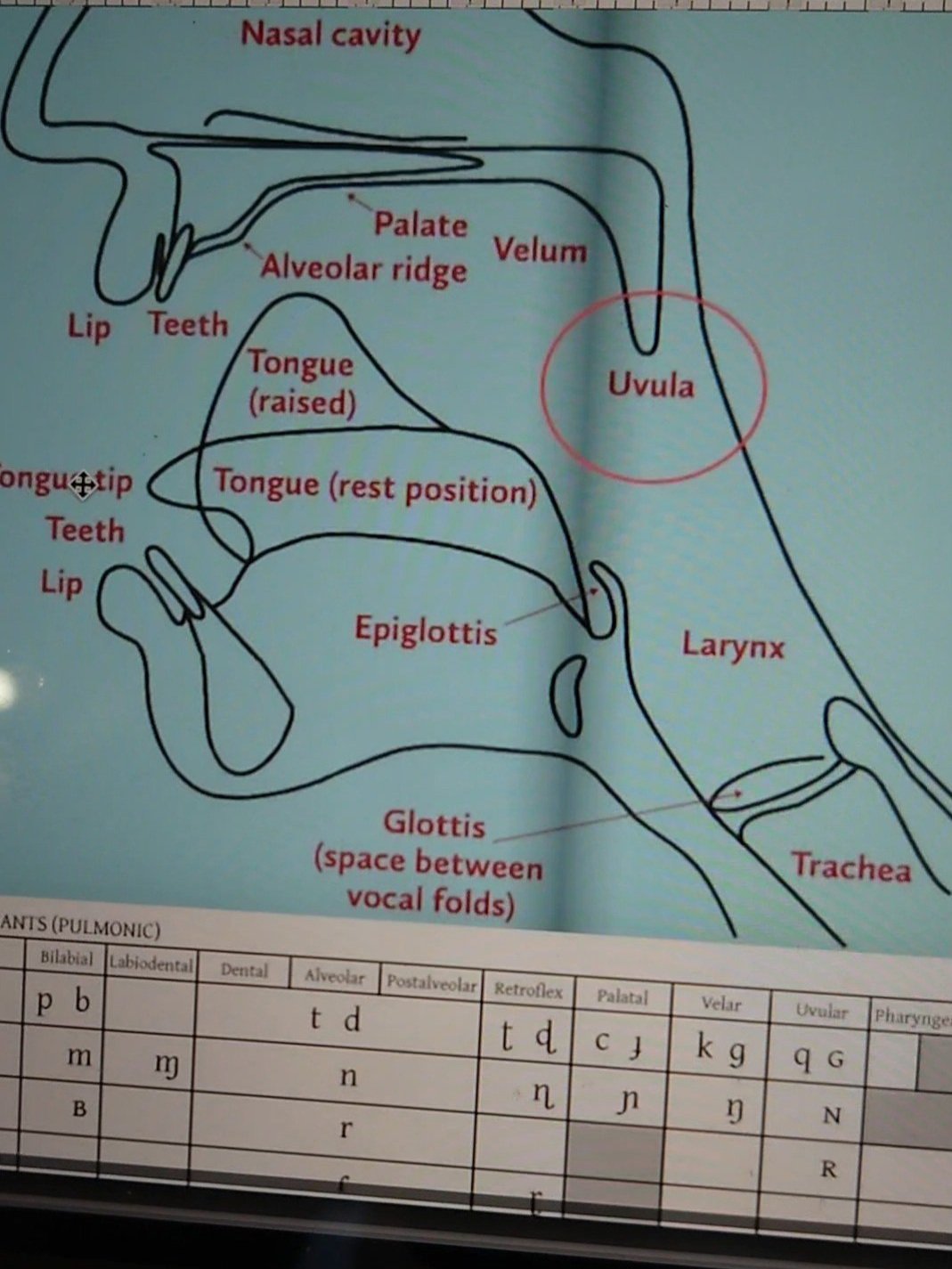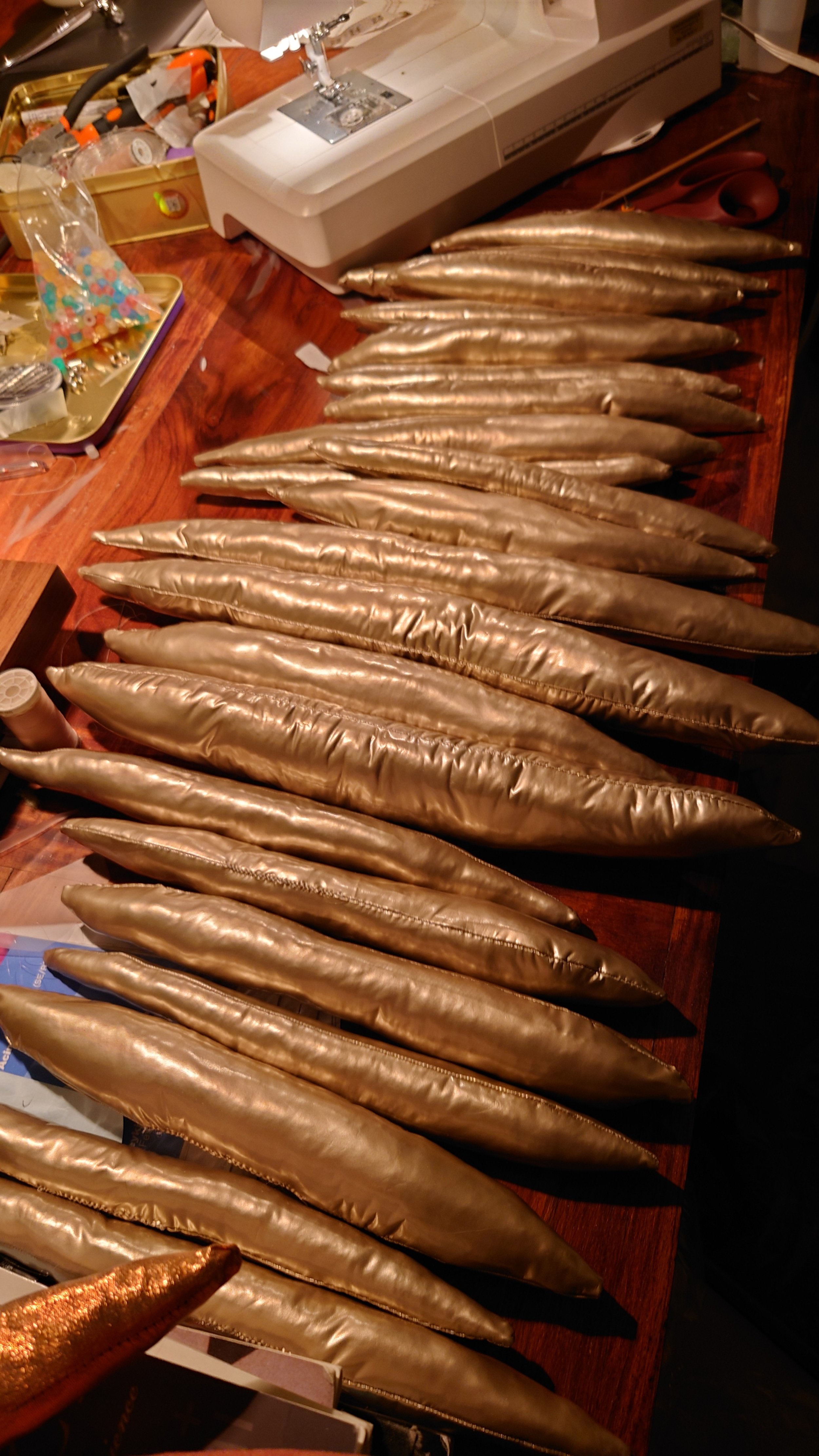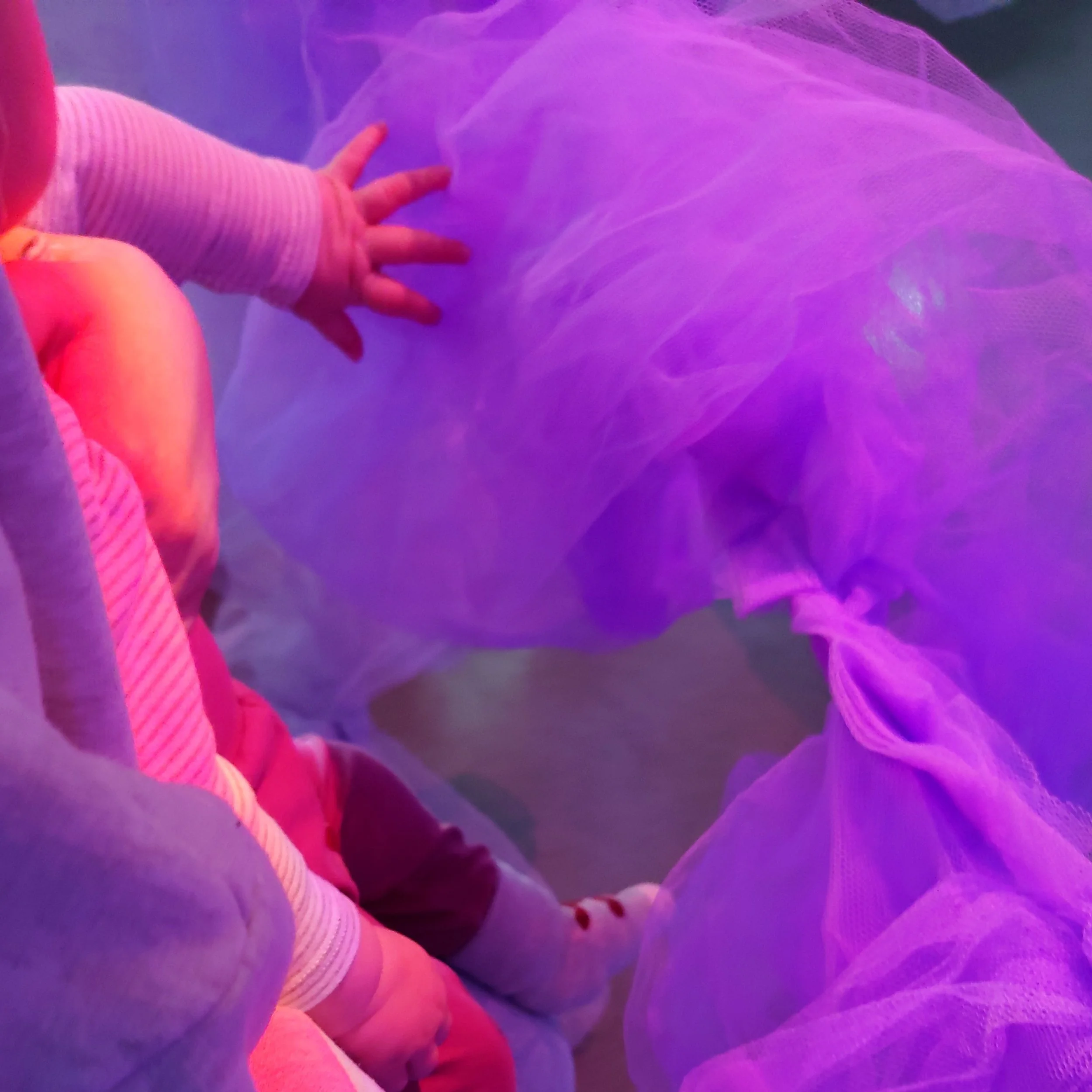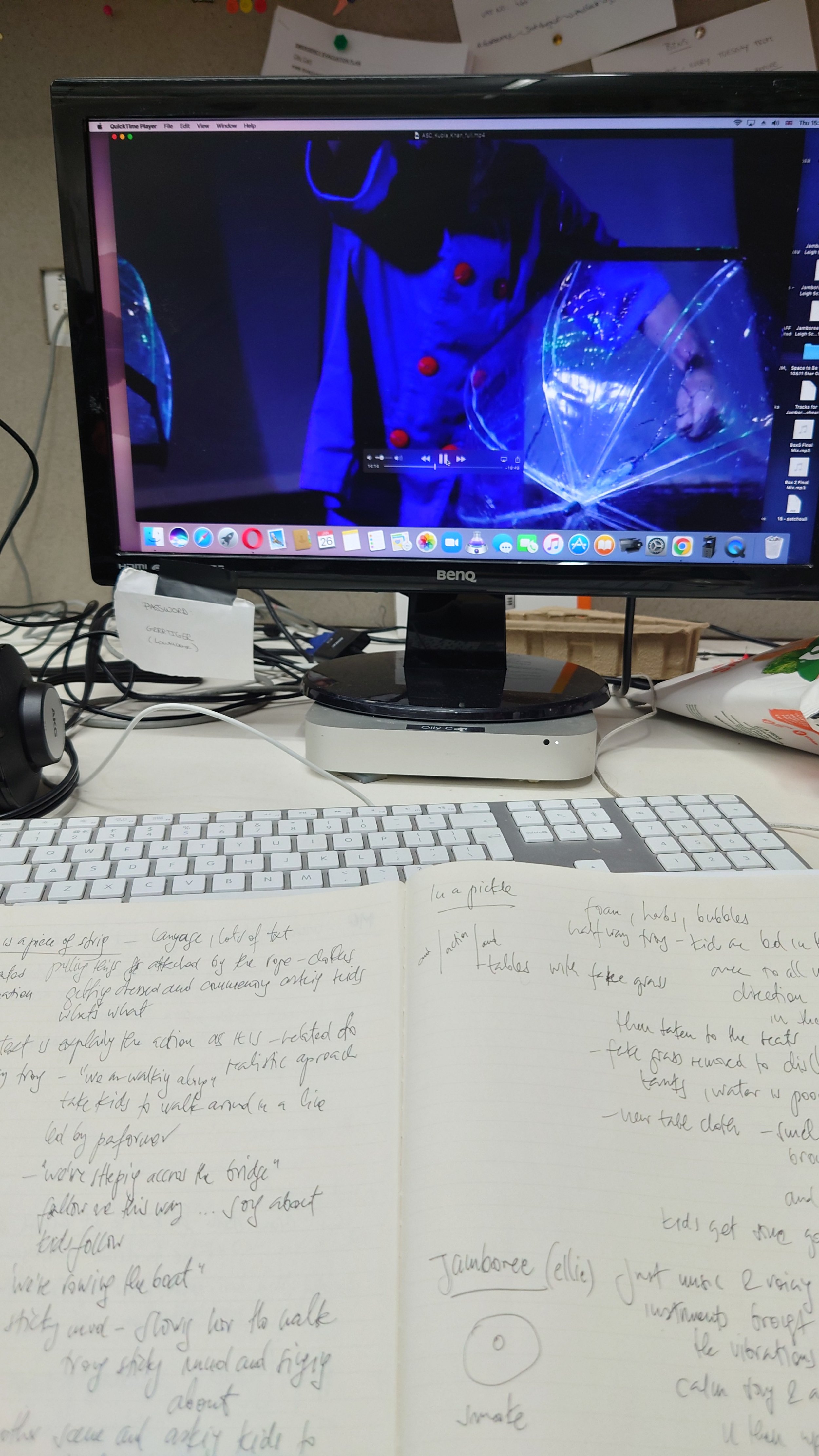
“Towards sensuous ecologies, Rethinking ableism in choreographic and movement practices”
2022 - 2025, Supported by the Swedish Research Council and in affiliation with Stockholm University of arts.
‘Towards sensuous ecologies’ aspires to expand the scope of action and perception of children with various developmental profiles aged six months to four years and their adults as active audiences. The purpose of the research is to develop new transdisciplinary artistic methods that are attuned to neurodivergent perception, enabling the experience of communality, inclusiveness and empowerment through immersion, choreography and body practices. It aims to contribute to the discovery of new artistic knowledge by actively cherishing a diversity of perception and expression. Forms and practices that arise through challenging the body politics of a dominant, normative culture and its blindness towards neurodiverse experience and embodied knowing will raise awareness of a need to increase the scope and visibility of inclusive artistic practices as well as addressing this lack. The research aims to contribute to and expand existing developments in the mixed ability dance field while opening a new space for dialogic intersections between the fields of choreography, dance and neurodiversity.
The research inquires into these questions:
• How can artistic research address and overturn normative demands and judgements placed on neurodiverse children and their adults?
• How can choreography and dance unfold and promote an interrelational ecology of artistic experience supportive of complex audience heterogeneity?
• How can body and performance practices respond to and be informed by this diverse audience?
• How are temporal formats, immersive environment and choreography reciprocally dependent on each other?
• How can immersive performance encompass competing accommodations of integrated audience?
This research project enables a completely new and meticulous exploration of choreographic and bodily practices, as well as of immersive environments, sensibilized for the widest spectrum of needs. The inquiry into their potential leads towards discovering new ways of creating and performing for this neglected audience group as well for the integrated audience. Anchored in child-centered perspective, and tapping into phenomenological approach to perception and pre-linguistic modes of experience, this project is strongly influenced by the research and activism in the disability studies field. Reaching into the field of integrated dance, it explores the ways neurovidversity challenges values embedded in traditional dance, searching for bi-directional effect, or reciprocal push between neurodiversity and choreography and body practice. The research aims to contribute to and expand existing developments in the mixed ability dance field while opening a new space for dialogic intersections between the fields of choreography, dance, and neurodiversity. The core of the multifaceted research approach concerns the cyclical process of collaborations with neurodiverse and neurotypical dancers. These collaborations focus on exploration of physical, choreographic and performative practices, and systematized/modular encounters with varying audience target groups within and without immersive environments. These environments explore multi-perspectivity, intersenssoriality and emplacement, as well as duration, which complexifies and enriches all these entangled elements. The number of encounters with an audience within the immersive environment, modified each time to meet the needs of the group, are carried in search of a flexible model that suits the integrated audience. Neurodiverse children can act in ways that are non-normative and confrontational, sometimes even highly anarchic. Hence the research seeks practices and formats that challenge the conventional power structures inherent in performance formats and that embrace individuality, disruption and even chaos - aiming for a shared vulnerability. Exploring how choreography can engender different qualities of awareness when disrupting the habitual audience performer modality. The research explores new perspectives on attention and new ways of researching perceptual performativity. Moreover the performative aspects of the research will closely observe the intersection of the agentive potentialities of each of the constituents. Audience, performer, stage elements and time become ‘the place’ where the choreography of attention can appear. This self generated interface - a sympoietic system, is considered as essential to perpetuating sensuous ecologies of integrated audience events. This project emphasizes the importance of integrated audience events, seen as the possibility of being destabilized by the ‘radical alterity of the other’ (Cachia, 2012) in perceiving the difference not as a threat but as a resource to question our own position in the world.
(Excerpt from the Research project Application text written in 2021)

Fields Of Tender - Durational immersive performance for neurotypical babies and children with diverse developmental profiles, created within the frame of this research project

The research was conducted in collaboration with (from left) Pavle Heidler, Jimmie Larsson, and Noah Hellwig, who performed and contributed to the development of movement, dance, and choreography for the performance Fields of Tender. They also collaboratively contributed to the written documentation of the practice as it was implemented within the performance.

I personally designed and handcrafted the scenography, costumes, and props for Fields of Tender.
Process with dancers / collaborators; choreographic, movement, voice practice, writing…
Stage and props design
Costume design
Performances at the special school and the hospital unit for activities for families with children with disabilities; Stockholm, Sweden
Knowledge sharing: lectures and workshops on my practice and research
Goldsmiths University of London, UK, 2024, 2025
Roehampton University, London, UK, 2023
Rose Bruford College, London, UK, 2023, 2024
Seoul Summer International ASSITEJ festival for theatre for children, Seoul, Korea, 2023
Toho Gakuen College of Drama and Music, Tokyo, Japan 2023, 2024
Kyoto, Japan, organized in collaboration with Beberica Company 2023
ASSITEJ Artistic Gathering, Novi Sad, Serbia 2024
Atta Festival, Istanbul, Turkey, 2024
BIBU Performing Arts Biennial for children and youth, Helsinborg, Sweden, 2024
Baby Theater Festival, Kaohsiung, Taiwan, 2024
Fratz festival Berlin, Germany, 2024
Baboro Festival, Galway, Ireland, 2024
Perception network, Skånes Dansteater, Malmö, Sweden, 2024
Study visits: attending conferences, workshops, rehearsals and performances related to the research focus (Companies: Oily Cart, UK; Bamboozle, UK; Second Hand Dance, UK; Frozen Light, UK; Danskompaniet Spinn, Gothenburg, SE)







































































































































































































